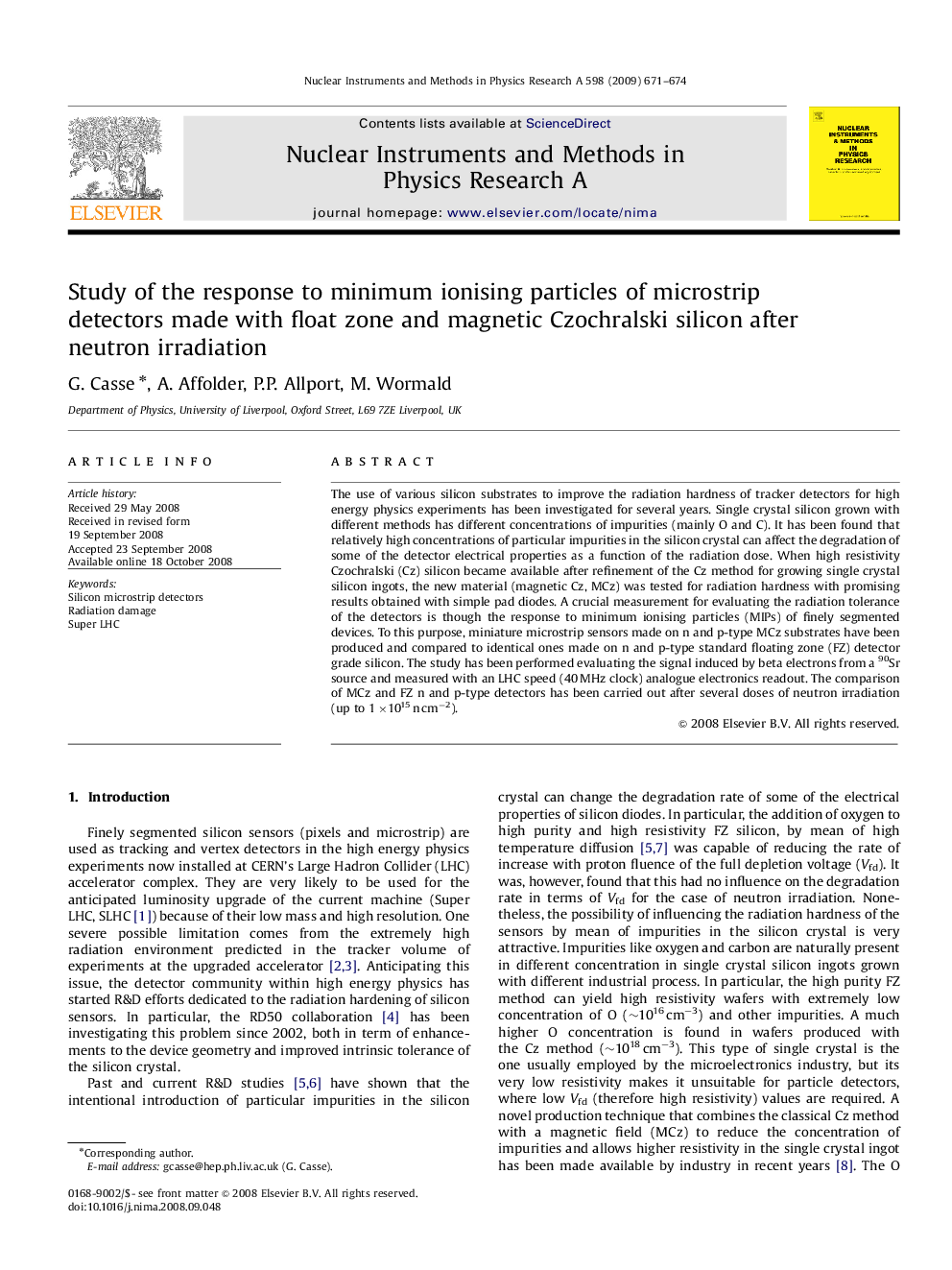| Article ID | Journal | Published Year | Pages | File Type |
|---|---|---|---|---|
| 1829281 | Nuclear Instruments and Methods in Physics Research Section A: Accelerators, Spectrometers, Detectors and Associated Equipment | 2009 | 4 Pages |
The use of various silicon substrates to improve the radiation hardness of tracker detectors for high energy physics experiments has been investigated for several years. Single crystal silicon grown with different methods has different concentrations of impurities (mainly O and C). It has been found that relatively high concentrations of particular impurities in the silicon crystal can affect the degradation of some of the detector electrical properties as a function of the radiation dose. When high resistivity Czochralski (Cz) silicon became available after refinement of the Cz method for growing single crystal silicon ingots, the new material (magnetic Cz, MCz) was tested for radiation hardness with promising results obtained with simple pad diodes. A crucial measurement for evaluating the radiation tolerance of the detectors is though the response to minimum ionising particles (MIPs) of finely segmented devices. To this purpose, miniature microstrip sensors made on n and p-type MCz substrates have been produced and compared to identical ones made on n and p-type standard floating zone (FZ) detector grade silicon. The study has been performed evaluating the signal induced by beta electrons from a 90Sr source and measured with an LHC speed (40 MHz clock) analogue electronics readout. The comparison of MCz and FZ n and p-type detectors has been carried out after several doses of neutron irradiation (up to 1×1015 n cm−2).
